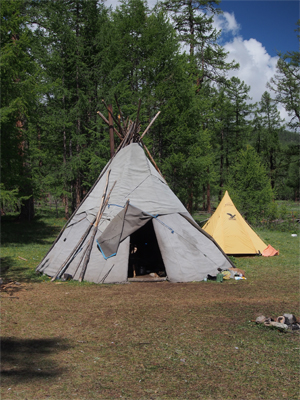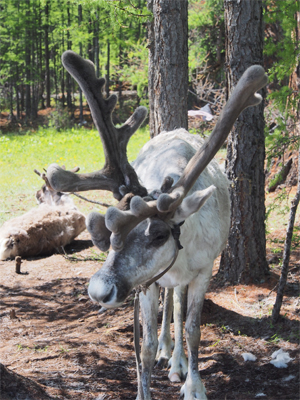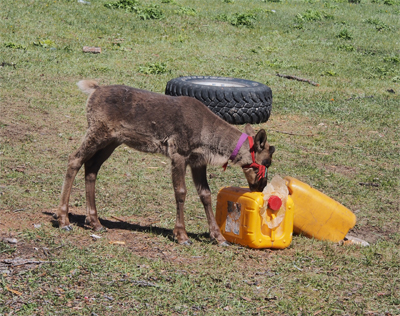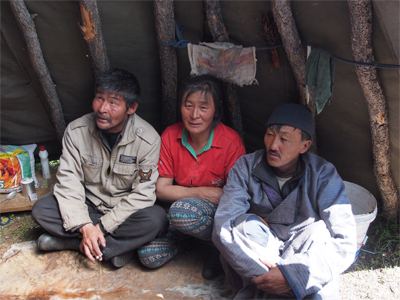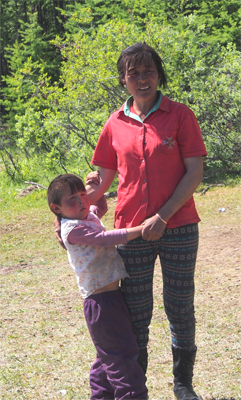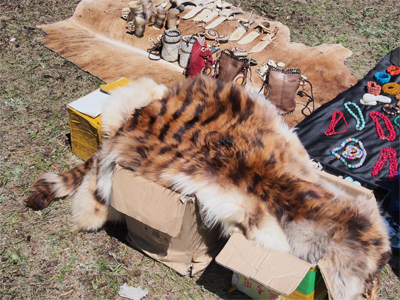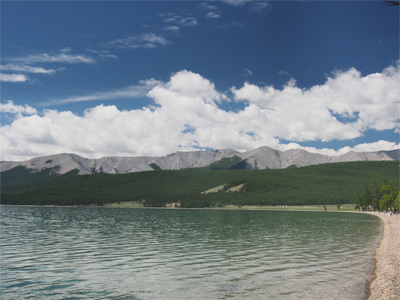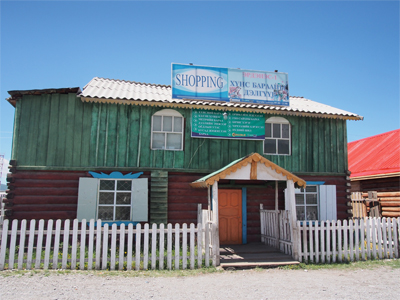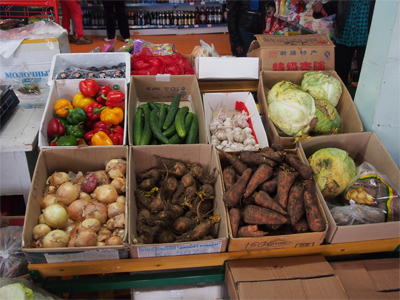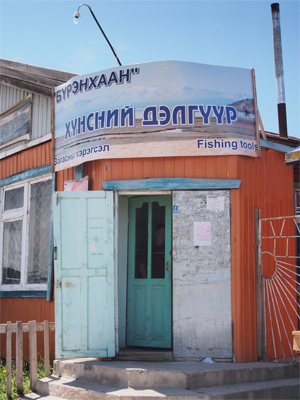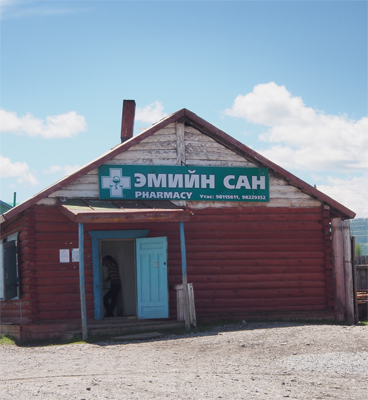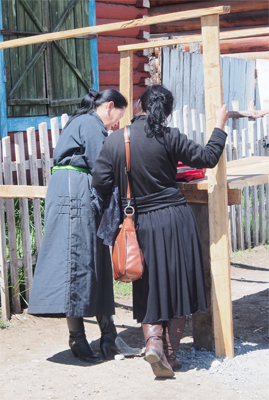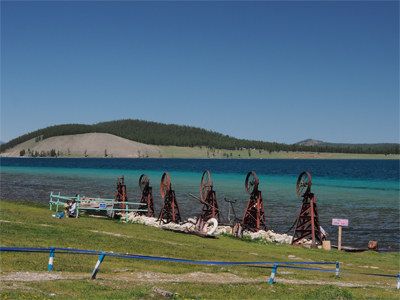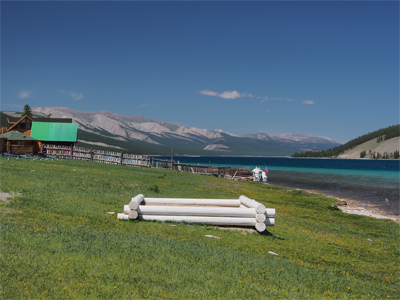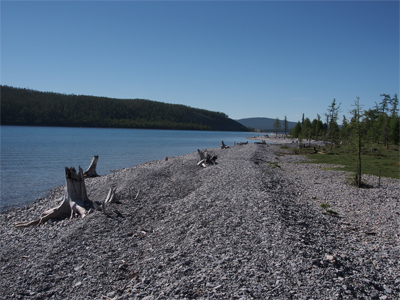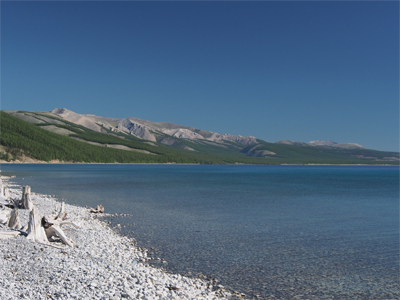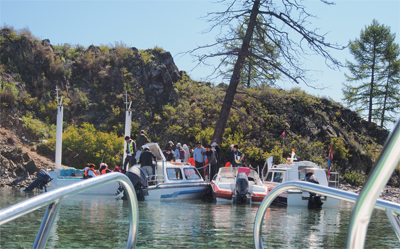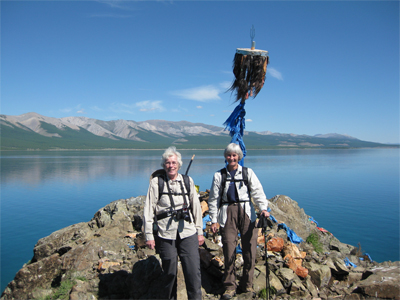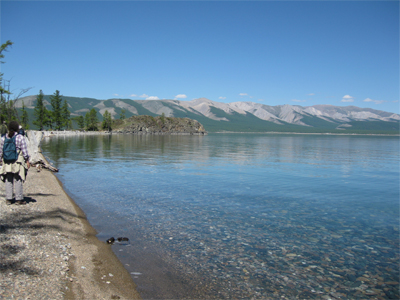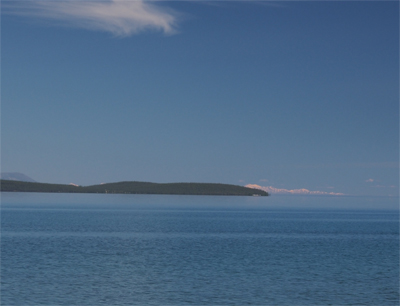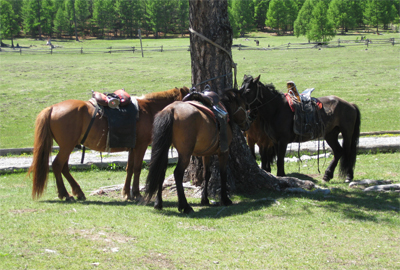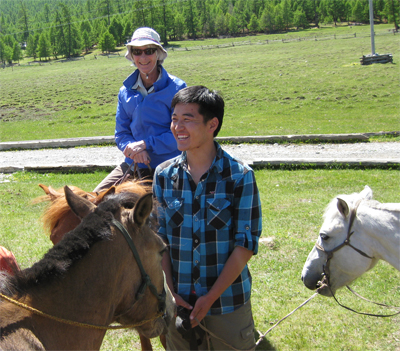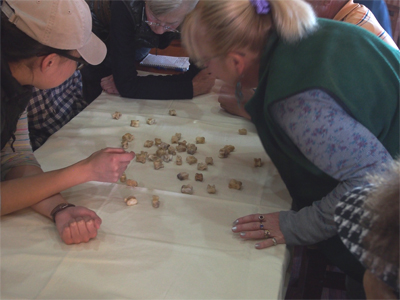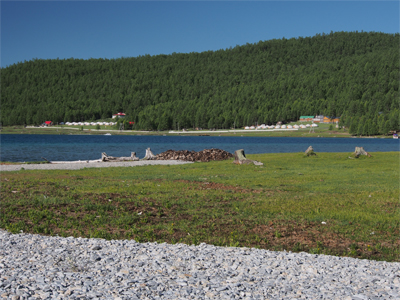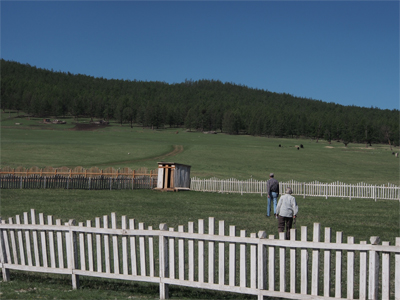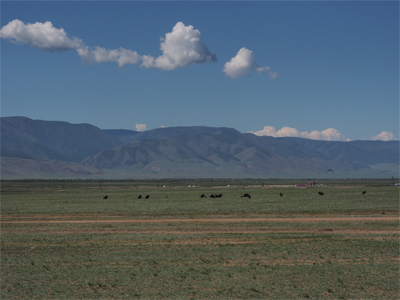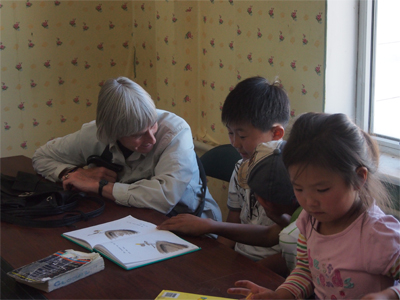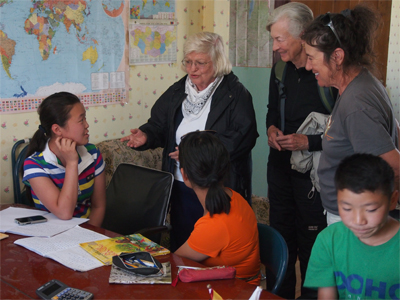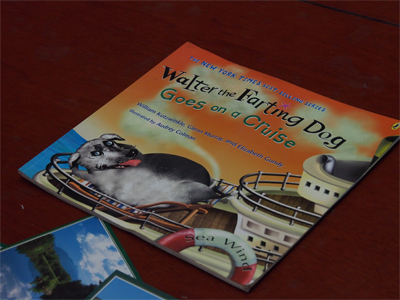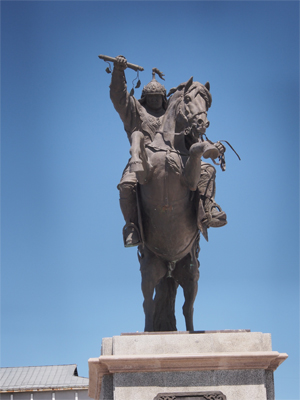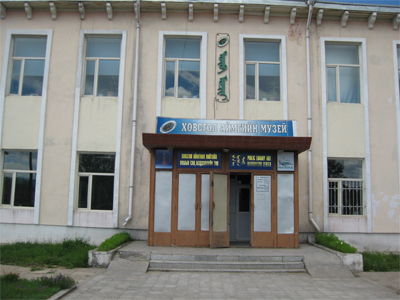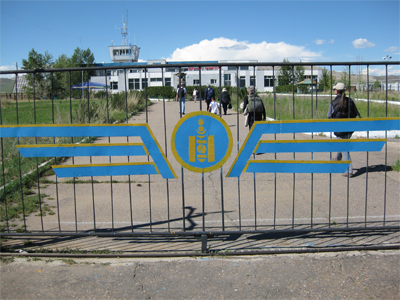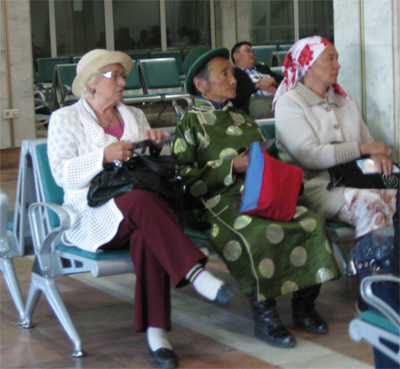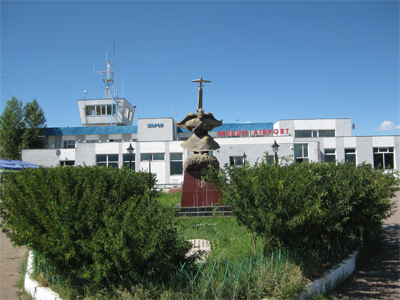Another 45-minute drive over rough non-roads took us to see a reindeer herder. The ethnic group of Tsaatans lives in nomadic teepees and survives almost entirely on their reindeer herds. They keep their herds high in the mountains of the taiga. They speak a native Turan language and most don't speak Mongolian. There are only 250 to 300 Tsaatan people left in about 70 families in Mongolia. Inbreeding is threatening their ethnic group. To keep the 1,000 reindeer alive they move eight to twelve times a year to find cold weather and grazing. They use the milk and meat for food, the hide for clothes and shelter, and sell the antlers to afford to send their young to school or to buy necessities.
Teepee living structure of the Tsaatan reindeer herders
|
Reindeer with nice velvet on his antlers |
Baby reindeer
|
Tsaatan family |
Mother and son
|
Young tiger's pelt for sale |
After our box lunch on the shore of Lake Khovsgol, we stopped at the supermarket in Khatgal village. There were more shelves of candy and snacks than of any healthy or filling food for meals.
|
|
Lake Khovsgol and the Horidol Saridag mountains
|
Village of Khatgal - Store |
Village of Khatgal - Supermarket produce |
Village of Khatgal - Fishing tackle store
|
Village of Khatgal - Pharmacy
|
Village of Khatgal - the latest gossip |
Before returning to camp we stopped at the first port in Mongolia, on Lake Khovsgol. In 1910 a pier was extended into this huge lake and a Soviet cargo ship was docked here. How they got it, or the three Russian ships now mothballed here, onto the lake we don't know. A fourth small ship takes passengers for cruises on the lake.
|
|
First port on the lake
|
First port on the lake |
Sun., 6/30/13 - Lake Khovsgol
|
|
Lake Khovsgol
|
Lake Khovsgol |
Boating to Wish Rock |
Posing at Wish Rock
|
Wish Rock on the peninsula
|
The snow covered mountains in the distance are in Russia |
This afternoon we all got on horseback for a one-hour walk to the south. The horsemen and camp staff got each of us on a horse one at a time. We were not given a leg up or a stool but the old man grabbed the seat of our pants and lifted us into the weird, rather uncomfortable saddles. Mongolians ride these small horses by standing in the stirrups to trot and gallop. The stirrups were short and the metal frame of the "seat" was uncomfortable even with the cushion. We were then led at a walk. It was fun but more like a pony ride than anything adventurous.
|
|
Horses awaiting their burdens - note the saddles |
Gale aboard her horse
|
Before dinner Lagshmi taught us how to play the ancient Mongolian ankle bone game. Each sheep ankle bone has four sides each of which represents a different animal: sheep, goat, horse, or camel. A quantity of bones is dropped to the table. The first player uses one finger to flick an animal into a similar animal without touching any other bone. He then uses the other hand to pick up one of the two that touched. Any mistake means it is the next player’s turn. The winner has the most bones. When every player has had one turn to earn bones, the remaining bones are dropped again.
|
Playing the ankle bone game
|
Mon., 7/1/13 - Lake Khovsgol to Moron to UB
|
|
Other ger camps as viewed from ours
|
Pit stop on the way to Moron |
Scenery
|
Gale and the kids and the "Best Idea" training center |
"Best Idea" training center
|
Reading material at the "Best Idea" training center |
Chingunjav Memorial in Moron town square
|
Local museum |
Mongolian soyombo at the airport |
A contrast in styles
|
Statue of Shuherch Gelenhuu at the airport
|
|
